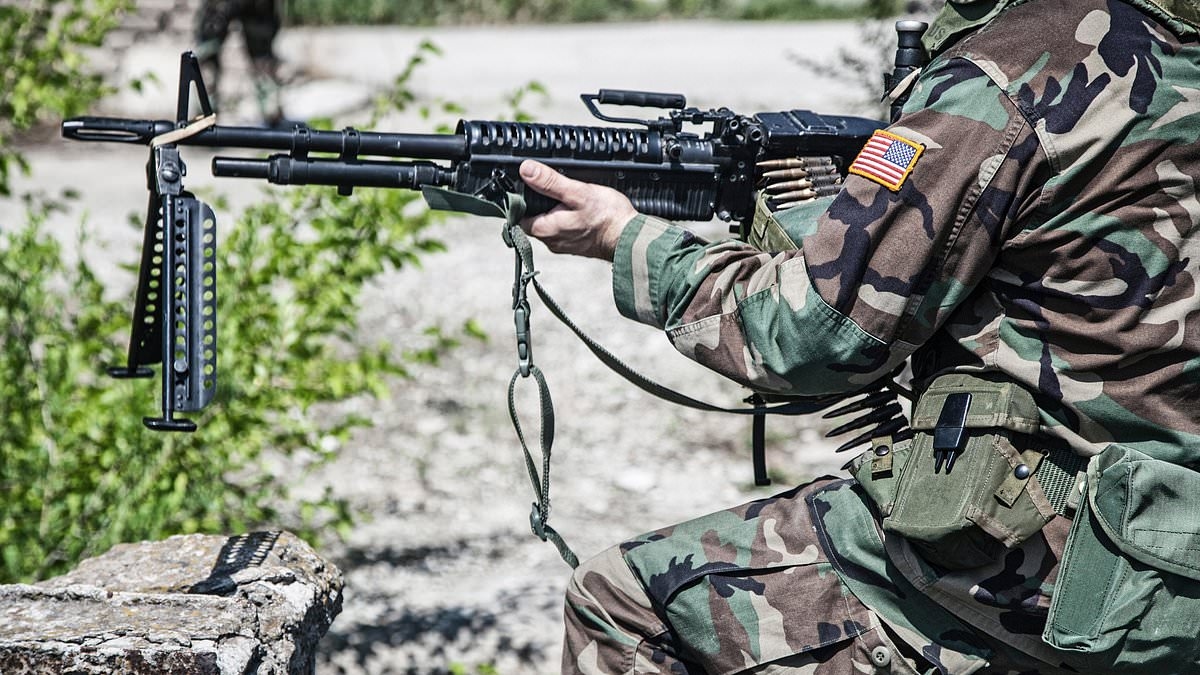Warhead by Nicholas Wright: Our greatest war weapon: the brain

By NICK RENNISON
Published: | Updated:
It is easy to imagine that the world’s democracies, in a war with authoritarian states, will inevitably win. But by 2021, US military planners had played out 18 war games involving Chinese and American forces in a battle for the island of Taiwan. In all of them the Americans lost. In his eye-opening, often alarming book, Nicholas Wright clarifies, ‘unless the democracies adapt fast enough as the world changes, we will lose’.
However much we deplore the existence of wars, they happen. We need to better understand why and how humans fight. Wright, a neuroscientist who has advised the Pentagon Joint Staff, argues that the best way to do this is through knowledge of ‘the central weapon of war’ – the human brain. His book takes us on a journey through ten brain regions, each the focus of a chapter.
War is a part of the human condition
He examines the power of our most basic drives, governed by a part of the brain called the hypothalamus. All these have a role to play in warfare. Thirst, for example. Wright delves into ancient history to look at a turning point in the Peloponnesian War between Athens and Sparta. Driven to desperation by thirst, Athenian soldiers waded into a river to drink, rendering themselves defenceless. The Spartans slaughtered them.
In the Second World War, the Germans adopted a ‘Hunger Plan’. Captured Russians were deliberately starved to death. Some of the prisoners pleaded to be shot rather than face the slower, more agonising death by starvation.
Why, Wright wonders, are humans prepared to fight at all? Why not run away? The amygdala is the area of the brain that is the seat of fear. Patients who have lost the amygdala are fearless. Wright cites the case of a woman from a violent part of Los Angeles who had been held at gun- and knife-point but was incapable of feeling the fear that might teach her to avoid dangerous situations.
Warhead is available now from the Mail Bookshop
Such people are rare but soldiers must somehow learn to suppress their fears and emotions to function. And, as Wright notes, ‘emotional control can be put to good or bad ends’. Most agree that it was good that Battle of Britain pilots could overcome their fear when flying. While members of the SS were praised for suppressing sympathies when killing Jews.
The higher-level regions of the brain such as the prefrontal cortex work to allow cleverer choices in tactics and strategy. It’s all too easy for higher command to make bad decisions. Often these are the results of failure to consider all the available options. When the USA invaded Iraq in 2003, Saddam’s regime was swiftly swept aside but little thought had been given to what would replace it.
Creativity, the human brain’s greatest ability, is needed in warfare as in every other sphere of activity. It may be needed more than ever in the future. War in outer space is possible. And, Wright states, ‘to fight effectively, it will become essential to manage human-AI relationships’.
He estimates there is ‘an approximately one in three chance’ that by the end of this century there will be ‘a catastrophe on at least the scale of either world war’. Warhead is a powerful argument for a greater understanding of the way the brain shapes the nature of war in the past, the present and the future he predicts.
Daily Mail





